An explanation of what I'm doing here can be found in my introduction post.
Last time we covered the April '96 releases of Bottom of the 9th, PO'ed, Williams Arcade's Greatest Hits, and Return Fire.
Today, we're closing out April and getting into May with Hardball 5, Starblade Alpha, Slam 'n' Jam 96 featuring Magic and Kareem, and Skeleton Warriors.
**This post is also featured on my site, fifthgengaming.blog, and can be found here.**
----------------------------------------------------------------------------------------------------
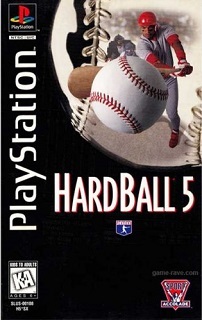
Hardball 5
Developer: Mindspan
Publisher: Accolade
Release Date: 4/15/1996
Time to Struck Out: 38 Minutes
I've been struggling to find something to say about this one. That's a bad sign, since it's only the fourth Baseball game we've looked at so far. Hardball 5 is less technically sophisticated than something like Bottom of the 9th, as this was a cross-gen release with the SNES. Yet, I found it to run well enough and be easier on the eyes than its polygonal contemporaries. The game is also generally playable, which puts it as the second most enjoyable one of these I've seen behind the hilariously busted World Series Baseball. See how tepid that analysis was? This is hard.
Of slightly more interest is the background on this thing. Apparently, the original Hardball!, released for the Commodore 64 in 1985, is credited as the first game to combine the existing Sim and Arcade styles of Baseball games. Before then, you had basic arcade games where you just hit balls around and grognard computer games where you would manage baseball teams with stats and all kinds of Moneyball bullshit. Hardball! seemingly married the two styles together, where you could play with numbers and hit balls. Truly revolutionary. Fast forward a decade and pretty much every one of these things works that way, and the Hardball games have stopped being the preeminent Baseball series. Though, I'm not sure what the preeminent series would even be at this point. Regardless, the Hardball franchise was past its prime by '96, and it would die out completely after Hardball 6, which we will get to at some point in the distant future.
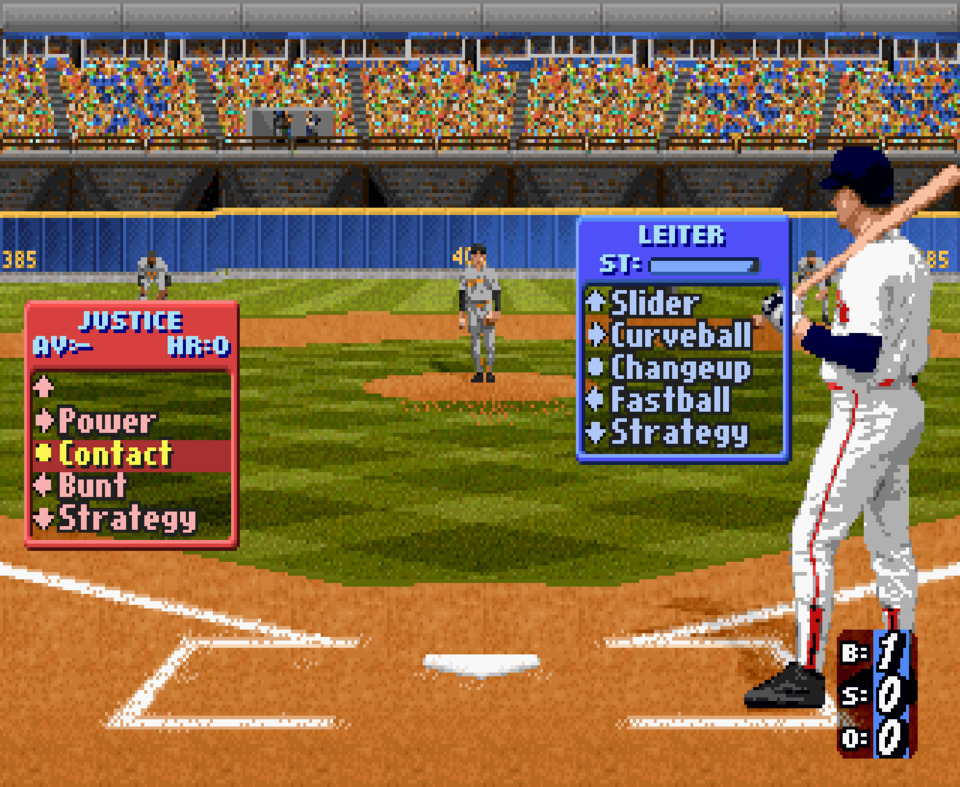
As far as this specific experience is concerned, the interface works well, the timing feels normal, and fielding is as terrible as anywhere else. The main strength of this thing is the lack of mystery in pitching. The other games we've seen obfuscate their pitch types and you're screwed if you don't read the manual. Here, there's a control menu that comes up to select what you're going to do with both pitching and batting, and the options all make sense. That feature is probably a hold-over from the series' sim roots, but it's appreciated nonetheless. I'm struggling to find other points of interest…Oh, here's the last one: when pitching, if you aim the cursor to the edge of the box closest to the batter, the AI will hit the ball in a way that almost always causes a foul or a ball that is immediately caught by a baseman. Good times.
----------------------------------------------------------------------------------------------------

Starblade Alpha
Developer: High Tech Lab Japan
Publisher: Namco
Release Date: 4/27/1996
Time to Blowing Up The Not Death Star: 40 Minutes
This experience is weird for me on a variety of levels. Let's go down the list, starting with the game itself.
There's not a lot going on in this package. Starblade Alpha is a Rail Shooter in the Pseudo-Light Gun style, meaning that you don't get to move your player character around the screen ala Space Harrier nor does the cursor movement have the same demands as a Light Gun experience. Instead, you get a cursor-based shooter kinda sorta reminiscent of the old Star Wars arcade game. There's a very light premise involving some space war, and you play as one of the last starfighters sent out to blow up the bad guys' fleet and super weapon. It's all presented as a single trip that is broken out into three sections, the first has you zooming around the enemy fleet and outer defenses of the Death StarStarkiller Base Red Eye; the second involves doing all kinds of trench runs up to the Red Eye core, called Octopus for some reason; and the third section involves killing the decloaked flagship and the final boss fight against the enemy commander who harasses you throughout the game. That boss is like if Mew from Pokemon Snap was a dickhead. You have your laser gun and nothing else, no secondary weapons, power-ups, or bombs. That simplicity is mitigated by the hectic pacing of the enemy waves and the rollercoaster ride visuals.
The weirdest thing is how manageable it is. This is based on a 1991 arcade game (we'll get to that), so I would expect severely punishing difficulty like with Raiden or something. Instead, I was able to beat the game after only one game over. I think I used like 5 or 6 continues total, which is insanely low. Imagine walking into an early 90's arcade, trying out a new cabinet and being done with it after only 6 credits and forty-odd minutes. Maybe the underbalanced difficulty is why it didn't catch on that well originally. Whatever the case may be, this PS1 release is literally just the arcade game, with the only option being the ability to choose between the original and updated graphics. The updated graphics look good for what this is, and the original would have been good looking in '91. This is a very short, very simple thrill ride, which isn't the kind of thing you'd want to drop full price on for a new console.
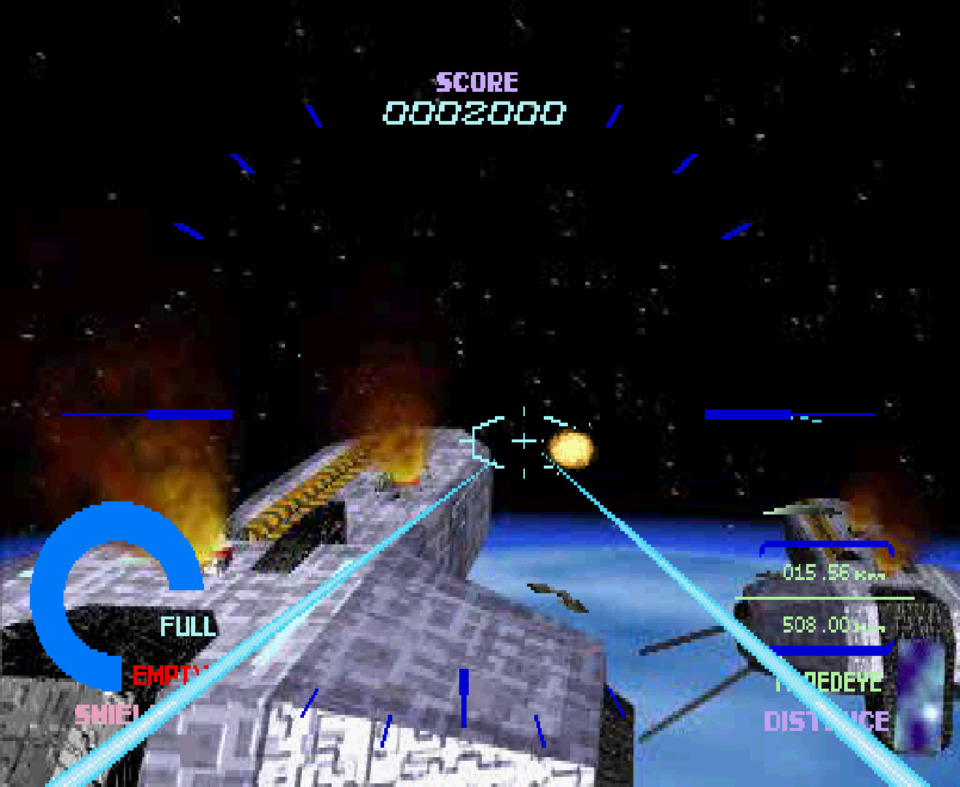
Let's dig a bit deeper into the lineage of that original arcade release, but we'll need to start at the beginning. In 1979, Namco released Galaxian to Japanese arcades. This was one of the arcade shooters that helped establish the standards for what would become the Shoot 'Em Up genre. The 1981 sequel to that game, Galaga, is something that literally everyone knows about, has seen, or has played. Once we yadda yadda our way past two more entries in the series during the 80's, we get to the 1990 International Garden and Greenery Exposition in Osaka. Don't let that name fool you, it was basically an ecology-minded World's Fair. Those still exist by the way, even though the U.S. hasn't had one since 1984. Apparently, Osaka's hosting another one in 2025. Anyway, for that Expo, Namco decided to show off their mad tech skillz by building a giant circular arcade game. It featured a giant screen encasing a room that contained a gimbled platform which had either 16 or 28 mounted controllers that would be used to aim at the screen and shoot. The game featured on this was a very early 3D Rail Shooter that Namco decided to call Galaxian³: Project Dragoon for some insane reason. Describing it doesn't do the thing justice, here's a video:
Obviously, that game only existed for as long as the Expo was around, but Namco put a lot of work into the concept, and they didn't want to waste it. A team of, let's say ambitious, developers spent a year getting a single-player adaptation up and running, renaming it to Starblade. I call it ambitious because the cabinet used a concave mirror to project the 24" monitor onto a larger area while creating some kind of depth to the image. It also included a rumble seat and simulated surround sound. It would have been a higher end cabinet and was successful as such in '91. As impressive as the polygonal presentation was in its moment, 3D games were developing quickly, and more substantial experiences would be available in arcades and beyond over the next two years. This thing would have been quickly forgotten, and it will eventually be forgotten along with the other very early polygonal games. Home releases for the Sega CD and 3DO in '94 kept it going a bit longer, though even with updated graphics the game was seen as too basic by that time. So, when Namco slapped an extra word at the end and shoved the 3DO version out on the PS1 in '96, it made no waves whatsoever.
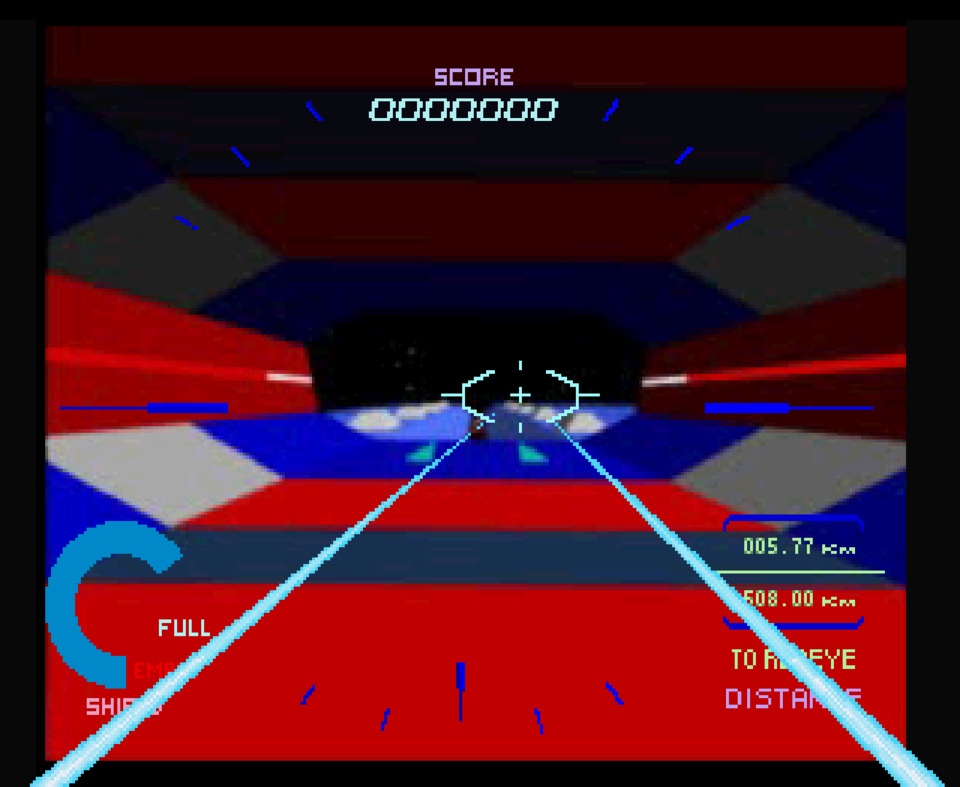
Starblade's years long journey thus ends with a whimper instead of a bang. Yet, it somehow fits kinda prominently into the larger picture of Namco's initial support of the Playstation. You see, Namco was the first and biggest publisher to get on-board with the PS1, seemingly due to grievances they had accrued against Sega and Nintendo. They committed early to porting several of their polygonal arcade games to the new system, without knowing whether the system would take off. When I say several, I mean five: Air Combat, Ridge Racer, Cyber Sled, Tekken, and this. In the U.S., Starblade Alpha was the fifth of those games to be release and for the next couple of years Namco’s going to focus on sequels and arcade compilations. Four of these games were also important in the Namco/Sega arcade rivalry of the 90's. There's stuff to get into on this topic, but I'll save that for an extra post where I'll throw in some other nonsense that I got my hands on.
----------------------------------------------------------------------------------------------------

Slam 'n' Jam 96 featuring Magic and Kareem
Developer: Left Field Productions
Publisher: Crystal Dynamics
Release Date: 5/10/1996
Time to Wanting To Do Anything Else: 14 Minutes
We're now going from the last of the Namco Five to the last of Crystal Dynamics' 3DO ports. This is a big week after all. Sadly, Crystal D's ported offerings end on more of a pathetic whimper than Namco's. Much more, actually. So much that I don't even want to talk about it. I'm not the only one, since there's barely any information about this game to be found on the web. Let's see what we can get out of this thing.
Magic and Kareem's Excellent Adventure is an arcade-style 5v5 Basketball game. It's the follow-up to the 1995 3DO game of mostly the same name. The biggest difference I know of is that this version has the licensing to use Magic Johnson and Kareem Abdul-Jabbar's likenesses. It may seem odd that those two retired players would be the selling point, but, you see, Crystal Dynamics wasn't able to secure the rights to any NBA teams or players for either of these games. So, getting those two individual guys was the best that could be done. Surely with that as the big selling point, they would be super prominently featured in the game, right? Of course not. As far as I could tell, those two are only used as anchors for a fictional All-Stars team that is included alongside the generic NBA stand-ins.
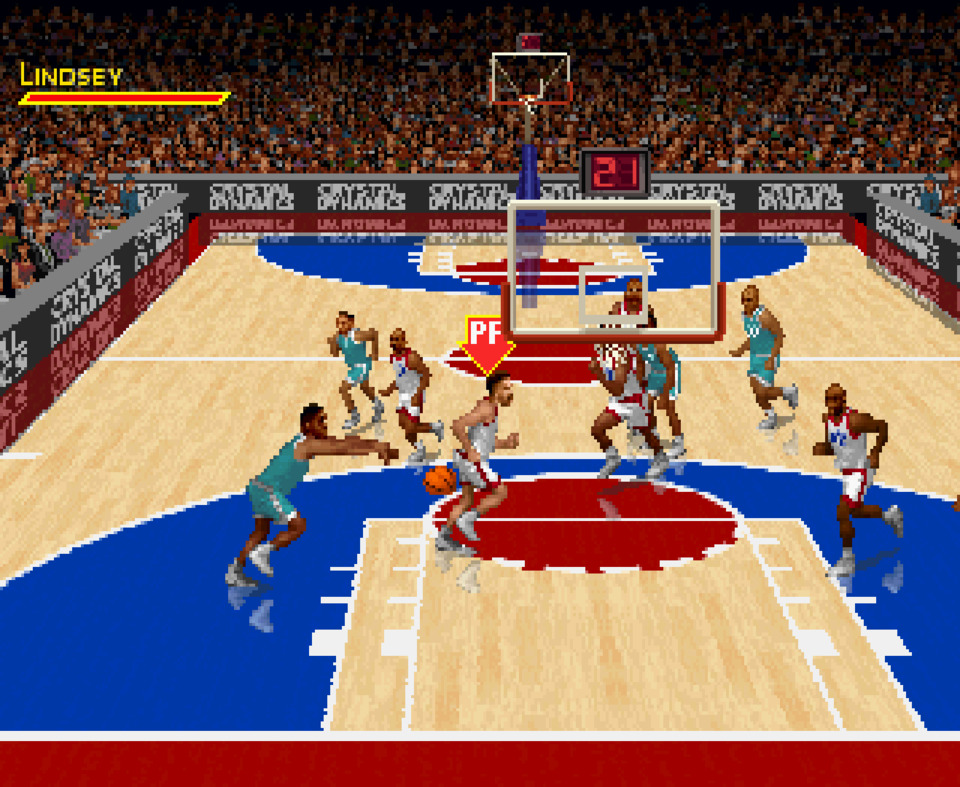
I harp on the inconsequential gimmick partially because it makes the title too long, and partially because there's so little to say about the game itself. It has the standard game modes, unlicensed teams with fake players for each of the expected cities, and realistic team sizes. Having originally released on the 3DO, it's using sprite-based players, which was fine in its original time and place but is actively in the process of going out of fashion in '96. That said, those graphics are probably the best thing going on here, with the players and crowd having a level of detail that was probably intended to compare favorably to NBA Jam. I wouldn't go that far, but I recognize the effort. Playing it is a different matter. The movement feels loose and floaty in a way that borders on uncontrollable, especially when playing on the defense. Combining that with the down-court camera angle, which I am on record as hating, we end up with a bad time. Nothing about it feels good to play, and not even in an interesting or notable way.
If anything, Slam 'n' Jam is notable for how generic it is. It's not quite as store brand as College Slam but is about as miserable as NBA in the Zone. That cross-over point of being unlicensed and crummy makes it the most cursed Basketball game currently available on the PS1, though maybe not the worst. That's as appropriate an outcome as we can get with a Crystal Dynamics 3DO port.
----------------------------------------------------------------------------------------------------
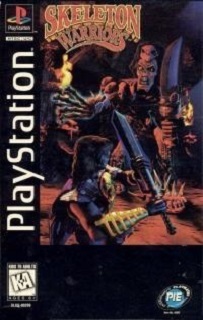
Skeleton Warriors
Developer: Neversoft Entertainment
Publisher: Playmates
Release Date: 5/22/1996
Time to Not Making That Jump: 43 Minutes
Remember when games were real games? And when games were also merchandising? You're telling me that's just the current day? Ok, fine, but back in MY day the bad licensed games were full price! Back when video games were good!
Now that I'm done with my old man grumbling, let's talk about 90's toy franchising. On September 17, 1994, CBS began airing its new cartoon programming block aimed at the older end of the Saturday morning cartoon audience, named the Action Zone because that was probably what the kids were into. This block was centered on the pre-existing Teenage Mutant Ninja Turtles, with two new shows surrounding it. Those two shows were WildC.A.T.S, which ended after one season and is not relevant for our purposes, and Skeleton Warriors, which ended after one season and is extremely relevant for our purposes. That second show was the brainchild of live-action Masters of the Universe director and alleged sex criminal Gary Goddard. Before I get into it, I encourage everyone to watch the cartoon intro.
At some point in the early 90's, Goddard had the epiphany that young boys think skeletons are cool, and gnarly skeletons wielding weapons are even cooler. He successfully pitched Playmates on the idea of a toy line featuring sick looking skeletal warriors, called Skeleton Warriors because subtlety is for nerds. Of course, a new line of action figures can't just be its own thing, it has to be a franchise. There wasn't anything abnormal about the merchandise produced around the toys, but how much of it Playmates committed to so early in the process is notable. Other than the figures, you got the expected lunchboxes and other sundries, a TV show, comic mini-series, and video game. It seems like the licensing and manufacturing deals all got done before anyone knew whether the franchise would even catch on. But hey, you gotta spend money to make money. So, the cartoon aired for a standard 13-episode pilot season in late '94 and was immediately cancelled. Also, no one bought the toys. Or the merch. It pretty much failed to catch on entirely. That was awkward, as the comic books and video game hadn't completed development by the end of ‘94. Sunk costs being what they are, the comics came out in '95 to no fanfare and the game similarly hit the PS1 in '96.
Why did it fail? That brings us to the premise. The story takes place in a techno-fantasy kingdom where a fancy power crystal is the primary energy source for everything. The old king dies and wants his children to share the throne, but the jealous younger son gets duped into giving an evil baron the power crystal. A scuffle ensues between the older son, the protagonist, and the evil baron resulting in the power crystal breaking. The crystal shards scatter, and the energy blast turns most of the capital city's population into skeletons. The royal siblings and friends now have to race the now-skeletal baron and his undead horde to collect the crystal shards and fix everything. While that basically works, the drawback is the fact that the titular Skeleton Warriors are the bad guys, who are supposed to lose. That's the received wisdom for the franchise failed, though I'm not fully convinced by that reasoning. Anyway, this all leaves us looking at a licensed game for a franchise that had been dead for a full year and a half when it came out.
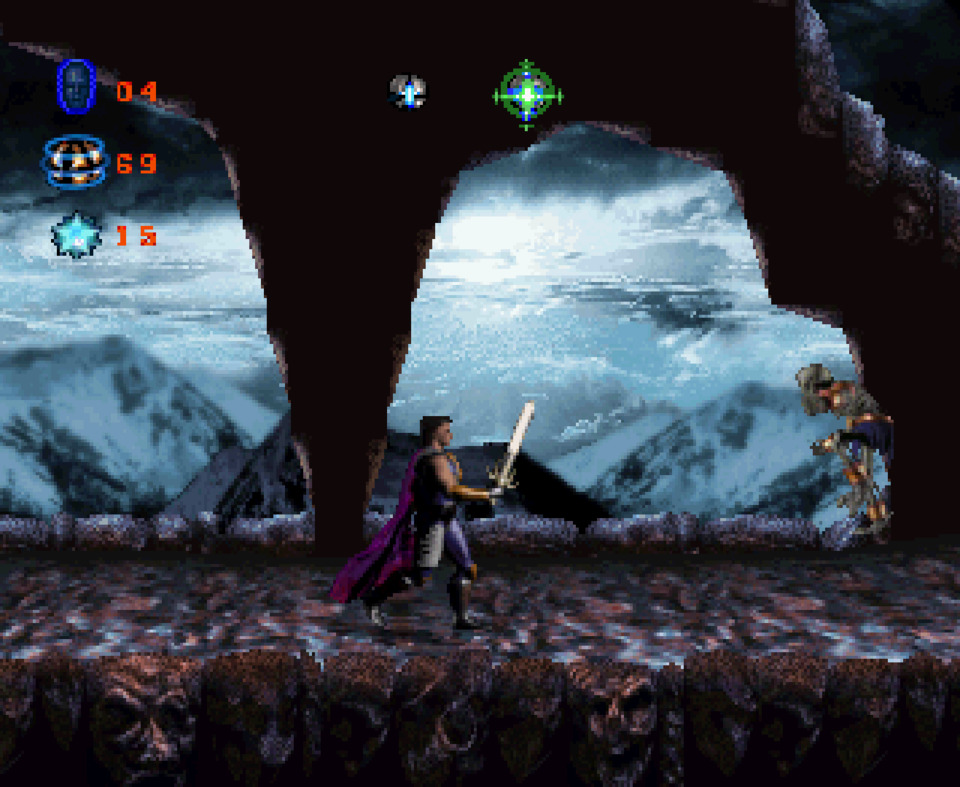
So, how is this game? It's firmly meh. The gameplay and structure are reminiscent of the 16-bit Castlevania games, mainly in the way that health and sub-weapons are handled. Though, the combat and enemy variety here are far less interesting than the games being riffed on. The straightforward action levels are occasionally interspersed with dull boss fights and weird 3D on-rails sections. I made it about halfway through the game in 45 minutes, so it's short but not the shortest thing out there at the time. The only reason I stopped was because I got to a very annoying vertical platforming section and the jumping super sucks. It also looks pretty bad, and the overall sound design is cheap and uninteresting. There's so little going on here to latch onto. The player character animates stiffly like an action figure, which might have been intentional. Really, it's kind of incredible that this thing exists at all.
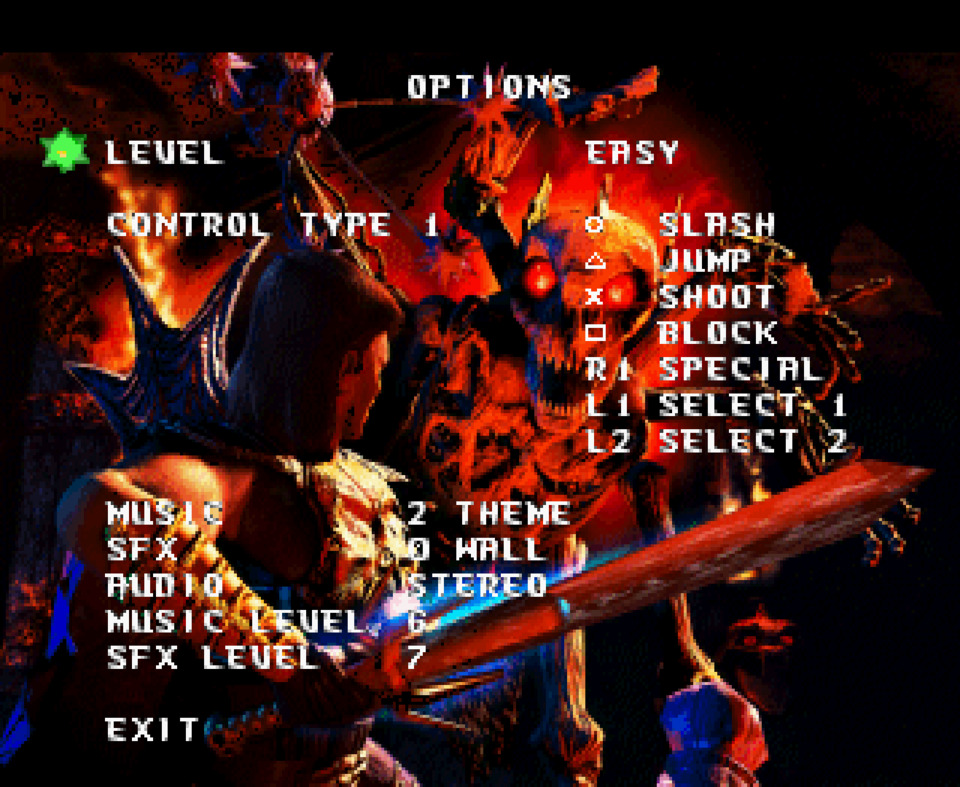
This is apparently Neversoft's first game. As in, the studio formed and immediately secured the Skeleton Warriors license from Playmates. As far as I can tell, the delay between the show and the game is due to the work on and scrapping of a Genesis game based on the property. By the time they began working on this one, the show had already been cancelled. If Playmates had just packed it all up after CBS cancelled the show, then this wouldn't have come out, and subsequently Neversoft might not have survived. Really, Skeleton Warriors is the reason why the Tony Hawk Pro Skater series existed. That's wild to think about, and in my mind, I'm going to draw a straight line from Frank Langella's portrayal of Skeletor to the release of THPS4 and thus one of my first real exposures to video games as a youngin’.
----------------------------------------------------------------------------------------------------
This was a special week, putting both the Namco 5 and Crystal Dynamics' 3DO ports in our rearview mirror. Now that we're entering into the summer months, we'll slowly begin picking up more big-name releases as we roll on toward the holidays. Slowly might be the operative word there. Regardless, let's plug these things into the Ranking of All PS1 Games.
1.Air Combat
…
23. Starblade Alpha
41. Skeleton Warriors
48. Hardball 5
63. Slam 'n' Jam 96 featuring Magic and Kareem
…
85.World Cup Golf: Professional Edition
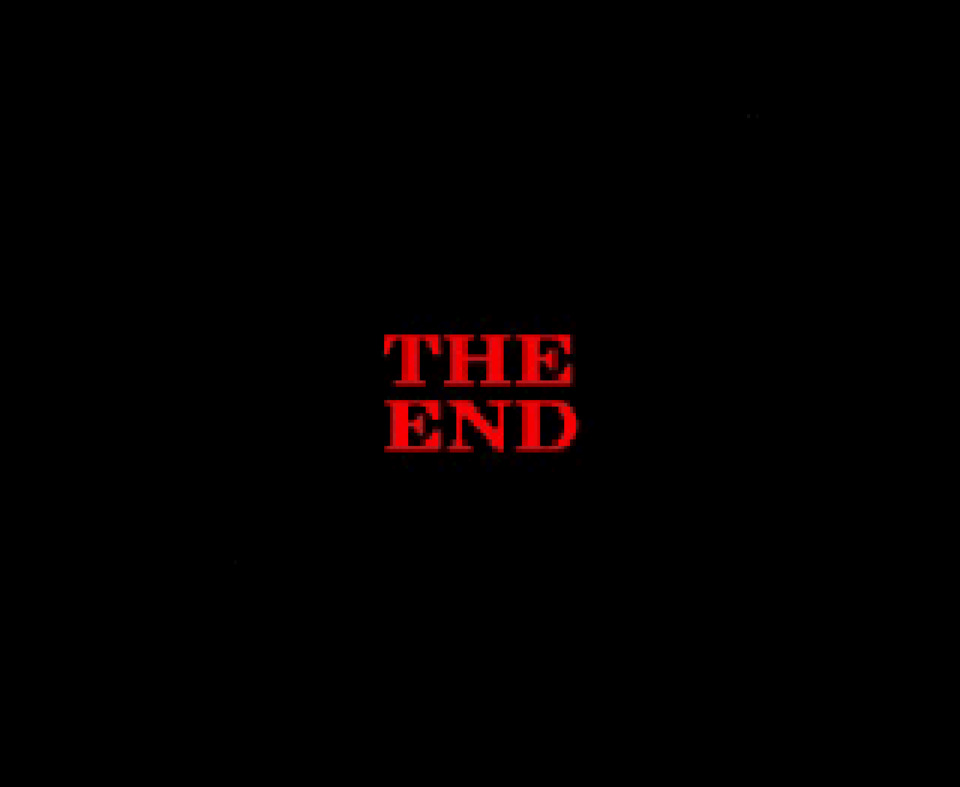
Later this week we'll attempt to grapple with our second batch of 3DO games from 1994: Soccer Kid, Family Feud, John Madden Football, Jurassic Park Interactive, and Shock Wave. I won't make any promises regarding the validity of the existence of any of those damnable things.
Then next week, we'll be back with the Playstation as we look at the next group of games from that catalog. I'm also, for other reasons, not making any promises regarding Battle Arena Toshinden 2, Silverload, Bust-A-Move 2: Arcade Edition, and Tecmo World Golf.
----------------------------------------------------------------------------------------------------
I'm not particularly happy with the videos I've been making for these posts, and I'm going to work out a different approach. Still, I regularly stream nonsense from 32-bit consoles, which you can find on my Twitch channel at https://www.twitch.tv/fifthgenerationgaming.
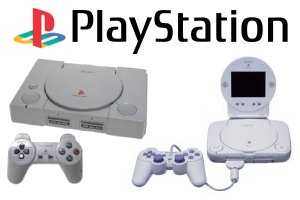
Log in to comment